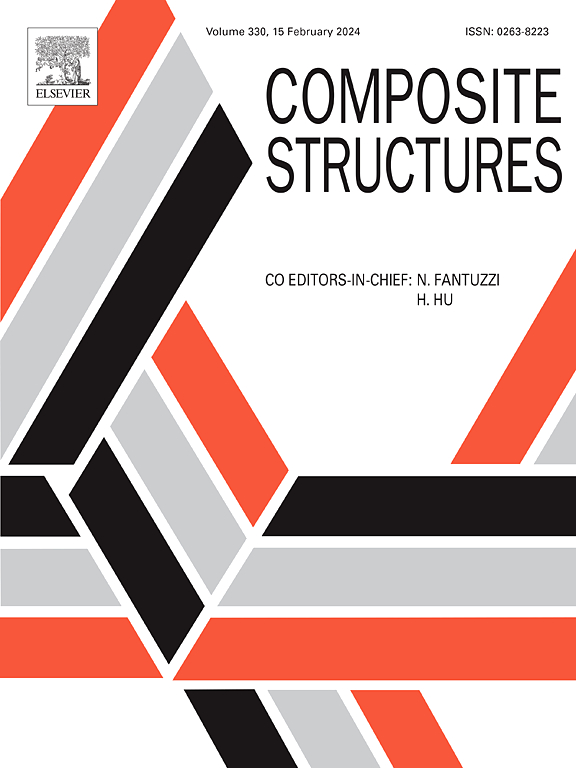应用高次梁理论研究了带抛物线型筋的功能梯度预应力梁在一系列移动荷载作用下的振动
IF 6.3
2区 材料科学
Q1 MATERIALS SCIENCE, COMPOSITES
引用次数: 0
摘要
本文采用三阶剪切变形梁理论,研究了具有抛物线形筋的功能梯度(FG)预应力梁在一系列移动荷载作用下的动力响应。FG梁的材料性能在厚度方向上呈幂律形式连续变化。利用拉格朗日方程得到了随时间变化的运动方程,并用Newmark-β法求解。为了得到动力响应,将截面轴向、横向挠度和转动的试函数用多项式形式表示。通过在位移函数中加入辅助函数来满足梁的边界条件。出于实际目的,只考虑简单支持的端部条件。在移动荷载等距、等幅、匀速移动的情况下,以表格和图形的形式给出了综合的数值结果,探讨了移动荷载的个数、移动荷载之间的距离、预应力荷载、材料梯度指数对引起共振现象的动挠度和临界速度的影响。此外,还进行了一些比较来验证本方法。结果表明,通过梁的移动载荷的数量是引起共振的最重要因素。本文章由计算机程序翻译,如有差异,请以英文原文为准。
Vibration of a functionally graded (FG) prestressed beam with a parabolic tendon under series of moving loads using higher order beam theory
In this study, dynamic response of a functionally graded (FG) prestressed beam having a parabolic tendon under the action of the series of moving loads has been examined using the third order shear deformation beam theory. The material properties of the FG beam vary continuously in the thickness direction according to the power-law form. The time-dependent equations of the motion are obtained with the help of the Lagrange’s equations, and solved by means of the method of Newmark-. The trial functions for axial, transverse deflections and rotation of the cross-sections are expressed in polynomial forms in order to obtain dynamic responses. Boundary conditions of the beam are satisfied by incorporating the auxiliary functions into the displacement functions. For the practical purposes, the only simply supported end conditions are considered. Assuming that the moving loads are equidistant with the same amplitude and move with the constant velocity, comprehensive numerical results are presented in tabular form and in figures so as to investigate the effects of the number of moving loads, the distance between the moving loads, the prestressing load, and the material gradient index on the dynamic deflection and the critical speed which causes resonance phenomena. Moreover, some comparisons are performed to validate the present procedure. The results show that the number of the moving loads travelling through the beam is the most important factor which causes the resonance.
求助全文
通过发布文献求助,成功后即可免费获取论文全文。
去求助
来源期刊

Composite Structures
工程技术-材料科学:复合
CiteScore
12.00
自引率
12.70%
发文量
1246
审稿时长
78 days
期刊介绍:
The past few decades have seen outstanding advances in the use of composite materials in structural applications. There can be little doubt that, within engineering circles, composites have revolutionised traditional design concepts and made possible an unparalleled range of new and exciting possibilities as viable materials for construction. Composite Structures, an International Journal, disseminates knowledge between users, manufacturers, designers and researchers involved in structures or structural components manufactured using composite materials.
The journal publishes papers which contribute to knowledge in the use of composite materials in engineering structures. Papers deal with design, research and development studies, experimental investigations, theoretical analysis and fabrication techniques relevant to the application of composites in load-bearing components for assemblies, ranging from individual components such as plates and shells to complete composite structures.
 求助内容:
求助内容: 应助结果提醒方式:
应助结果提醒方式:


